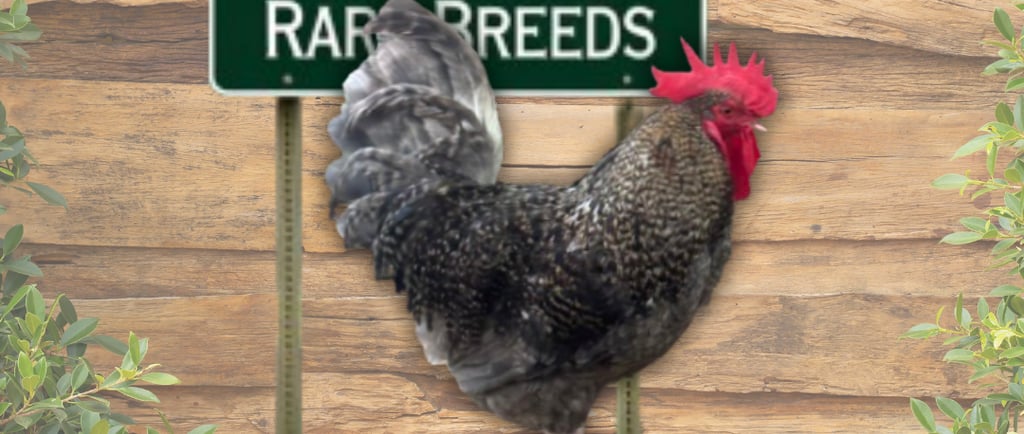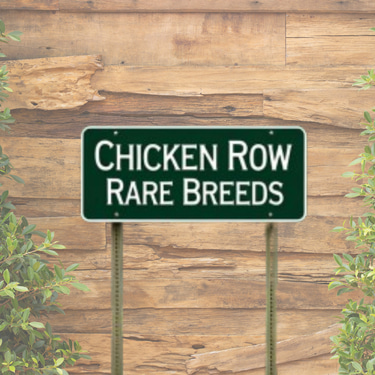Bielefelder - Silver
A rare German heritage breed with silver plumage and auto-sexing traits
8/22/20252 min read


🐓 Silver Bielefelder: Germany’s Rare Auto-Sexing Beauty
With its striking silver barring and calm, practical nature, the Silver Bielefelder is a stunning variation of the German Bielefelder breed. Like the Crele Bielefelder, it was developed in the 1970s as a dual-purpose chicken — but the Silver variety stands out for its unique coloration, a pattern not found in any other chicken breed.
📜 A Brief History
The Bielefelder Kennhuhn was developed in the 1970s by German breeder Gerd Roth in the city of Bielefeld. He combined Malines, Welsumers, and American Barred Rocks to create a large-bodied, productive chicken that could supply both eggs and meat.
The breed was first shown in 1976 under the name Deutsche Kennhuhn and officially recognized in 1980 as the Bielefelder Kennhuhn.
The Silver Bielefelder (silber-kennsperber) was developed shortly after the Crele variety. It carries the same cuckoo-barring pattern but lacks the red or golden coloring, resulting in a crisp silver and black plumage that is unique to this breed.
📌 Breed Snapshot
Status: Not at risk (Heritage Conservation Priority List)
Use: Dual-purpose (meat and eggs)
Egg Production: 200–230 eggs per year
Egg Size & Color: Large; brown
Weight: Roosters 6.5–9 lbs (3–4 kg); Hens 5.5–7 lbs (2.5–3.25 kg)
Temperament: Calm, easy to manage
Characteristics: Silver barred plumage, auto-sexing, large-bodied, hardy
🐓 Why Choose a Silver Bielefelder?
Unique Plumage
The Silver Bielefelder is the only breed with its particular silver barring pattern — a dramatic alternative to the traditional crele.
Reliable Layers
Hens lay around 230 large brown eggs per year, making them excellent producers for small farms and families.
Dual-Purpose Utility
Large-framed and fast-growing, Silver Bielefelders provide a solid carcass while still maintaining strong egg output.
Auto-Sexing Advantage
Like other Bielefelders, chicks hatch with feather colors that immediately reveal their sex — a convenient trait for breeders.
🛠️ Care Considerations
Space Requirements – These are large-bodied birds and need roomy coops and runs.
Cold Hardy – Developed in northern Germany, they are naturally well-suited to colder climates.
Diet – Being dual-purpose and fast-growing, they do best with a protein-rich feed.
Recognition – While recognized in Europe, the breed is not yet included in the American Poultry Association’s Standard of Perfection.
🧬 Appearance at a Glance
Plumage
Silver Kennsperber: Cuckoo pattern in silver and black, with no red or gold coloring
Size
Roosters: 3–4 kg (6.5–9 lbs)
Hens: 2.5–3.25 kg (5.5–7 lbs)
Eggs
Large, brown, up to 230 per year
Bantam Version
Roosters: 1.3 kg
Hens: 1.1 kg
Eggs: ~160 medium brown per year
🧡 Heritage and Conservation
The Silver Bielefelder is part of the larger Bielefelder breed group and shares its reputation for hardiness, productivity, and practicality. It is listed as “not at risk”, meaning it has a stable population compared to other rare breeds.
🧠 Final Thoughts
The Silver Bielefelder combines everything people love about the breed — calm temperament, reliable egg production, auto-sexing chicks, and dual-purpose value — with a unique and eye-catching silver plumage.
If you’re looking for a productive yet ornamental chicken that stands out from the usual flock, the Silver Bielefelder is a perfect choice.
Did You Know?
The Silver Bielefelder’s plumage is a completely new color pattern, not found in any other breed.
Like the Crele variety, Silver Bielefelder chicks can be sexed at hatch by their feather color.
The breed was officially recognized in Germany in 1980, making it a relatively new but already well-established chicken.
